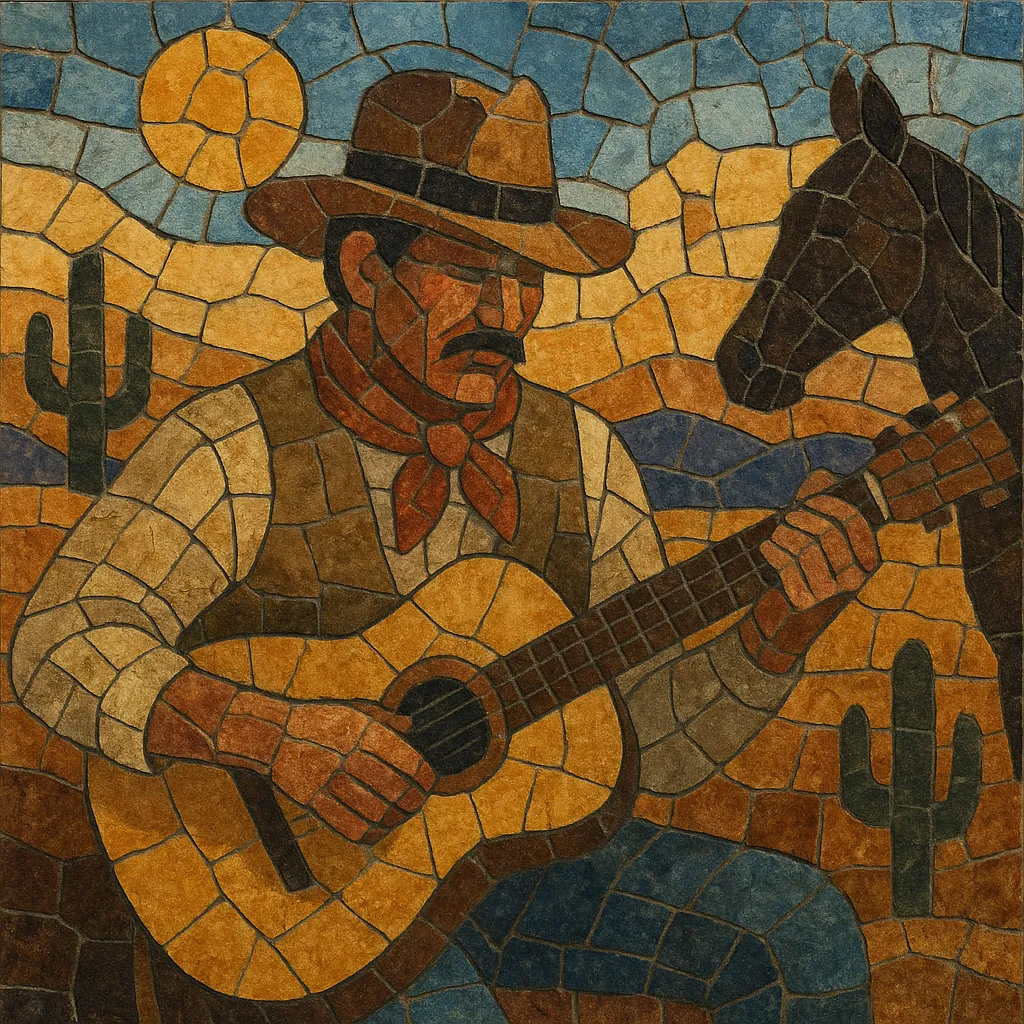Western (often called Western or cowboy music) is a traditional North American song style rooted in the working life and mythos of the American and Canadian West.
It emphasizes narrative ballads about cattle drives, trail life, prairie landscapes, and frontier values, commonly delivered with clear storytelling, memorable choruses, and occasional yodeling.
Musically it draws on British Isles balladry, American folk, and Mexican traditions such as corrido and ranchera. Arrangements are typically acoustic and sparse—acoustic guitar, fiddle, harmonica, upright bass, and sometimes accordion or steel guitar—favoring diatonic harmony and strophic song forms.
Rhythms often include two-step (2/4), lilting waltzes (3/4), and gentle straight-time ballads, supporting the music’s evocative, wide‑open feel distinct from but historically intertwined with country music.
Cowboy songs emerged in the 1800s among cattle hands driving herds across the American West. Workers adapted Anglo‑Celtic ballad forms and frontier fiddle tunes to their daily lives, mixing them with Spanish/Mexican corridos and ranchera elements encountered across the Southwest. Early songs were transmitted orally, emphasizing strophic storytelling, simple harmonies, and practical sing‑along melodies suitable for campfires and trail work.
The advent of radio, phonograph records, and traveling shows brought Western songs to broader audiences. Vaudeville and Tin Pan Alley helped shape the “singing cowboy” image, while collectors and performers began publishing cowboy songbooks. Gene Autry, Roy Rogers, Tex Ritter, and the Sons of the Pioneers popularized polished versions of trail ballads, yodeling, and harmonized choruses, turning Western from regional folk into a national style linked to Western films.
Western intertwined with emerging country styles and dance bands, giving rise to offshoots like Western swing. Marty Robbins expanded the narrative scope with cinematic gunfighter ballads, while radio and Hollywood standardized the sound and imagery of the genre. Despite increasing overlap with country, Western retained a distinct repertoire focused on frontier themes and waltzes.
Artists such as Michael Martin Murphey, Don Edwards, Riders in the Sky, and Sons of the San Joaquin revived traditional material and wrote new songs in classic style. Festivals, museums, and associations dedicated to cowboy culture sustained interest, while historians highlighted the genre’s multicultural roots—Anglo‑Celtic, Spanish/Mexican, and Indigenous influences—within the broader American musical tapestry.
Western’s melodic directness, narrative balladry, and iconic imagery influenced country music’s storytelling tradition, Western swing’s danceability, and later Americana and alt‑country movements. Its songs remain cultural signposts for the mythic West and a living folk tradition.


